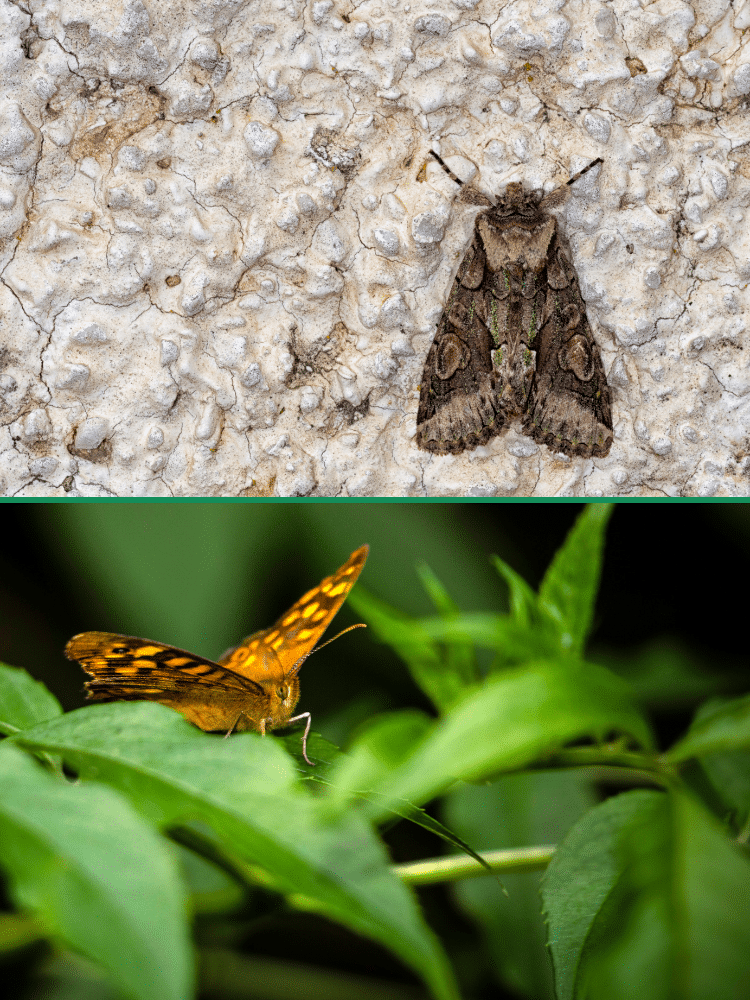You may have noticed that moths seem to go into hiding once the colder weather emerges. But where do they go? Are they like bears that search out a cosy cave to slumber in until the spring comes? Do they all just die off? Or do moths hibernate?
Moths do not hibernate. While they “sleep through the winter”, it is a different process to hibernation. Moths will go into a dormant state. They will essentially stop growing and use energy only to survive in their almost sleep-like state.
Moths will overwinter in one of their lifecycle phases.
Some species will spend the cold season in their eggs, others in their cocoons, and others will remain as adult moths in hiding until the warm weather comes and wakes them out of their slumber.
Before the cold season begins, moths will seek out sheltered areas. If they are adults that lay eggs right before winter, they will lay their eggs in a safe location.
If the caterpillar overwinters in a cocoon, it will find a place that will not be in direct contact with snow or ice.
Adult moths that will remain as adults during the cold, snowy season will seek a safe and sheltered location to sleep, usually in nooks of buildings or inside homes.
Do Moths Come Out in Summer or Winter?
Moths cannot generate their own heat. They rely solely on the sun to warm their wings. Once the weather drops below freezing, most moths cannot use their wings to fly.
During the summer, you may notice moths stretching their wings in the sun or even near warm lights at night.
This heat keeps their wing muscles happy and flexible. Once the cold sets in, they cannot create warmth for themselves. For this reason, most moths will go dormant in the winter.
Once the sun comes back and the snow melts, the moths will return from their hiding places, eggs will hatch, and the cocoons will open. Most moths will emerge in the spring and stay active until early fall.
There are, however, a few species of moths that thrive in the cold and snow! These moths can be seen when all other types of moths are dormant and resting the winter away.

How Long Do Moths Hibernate?
Moths enter their dormant state in the late fall and will come out of it when the spring comes.
Sometimes, a few days in the early spring are warm enough to wake some of the moths. This poses a huge problem when it goes back into freezing temperatures. Many moths can be stunned by this weather mishap.
However, it usually will take a few weeks of warm enough weather before the moths are reawakened and ready to carry on.
Once they sense that sunshine, they will come out of their dormant state as if it never happened.
When Do Moths Hibernate?
Moths will begin to go dormant once the weather starts getting cold. Just as we do not like to be outside on gusty and cold winter nights, most moths do not either.
Once they have entered their dormant state, the moths will not re-emerge until spring. If a moth has taken shelter in your home, it may reemerge too early.
If this happens, try to catch them in a cardboard box and place them in a cool place until they calm down. Once they are calm, put them in a room that is not heated or in a safe place outdoors.
They will go dormant again and awaken in the actual spring. Be sure to place them in a space they can exit when it is time.
Some Moths Live for Days!
Although some species of moth will hibernate, there are a large number of moths that do not and, therefore, do not survive the cold winter months. These moths will live for only a few weeks or even days!
Summary
When the weather begins to turn cold and the days get short, moths will settle in for a very, very long nap. Unlike bears that will go into hibernation, moths will go into a dormant state.
During this time, moths will essentially freeze time.
They have gathered enough energy to remain in a deep sleep-like state for the entirety of the winter. Some moths will overwinter as eggs, others in cocoons, and some will even remain as adult moths.







